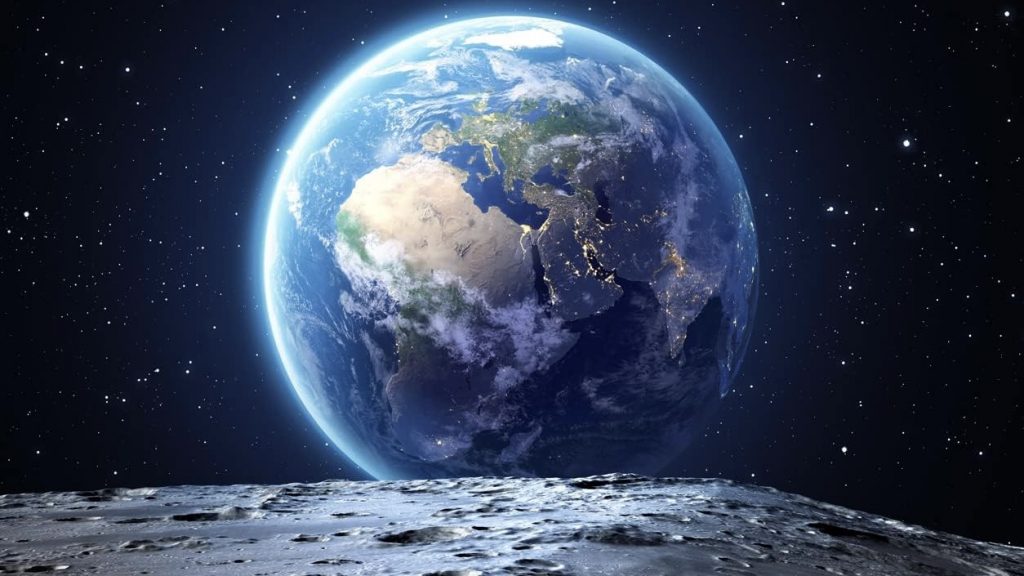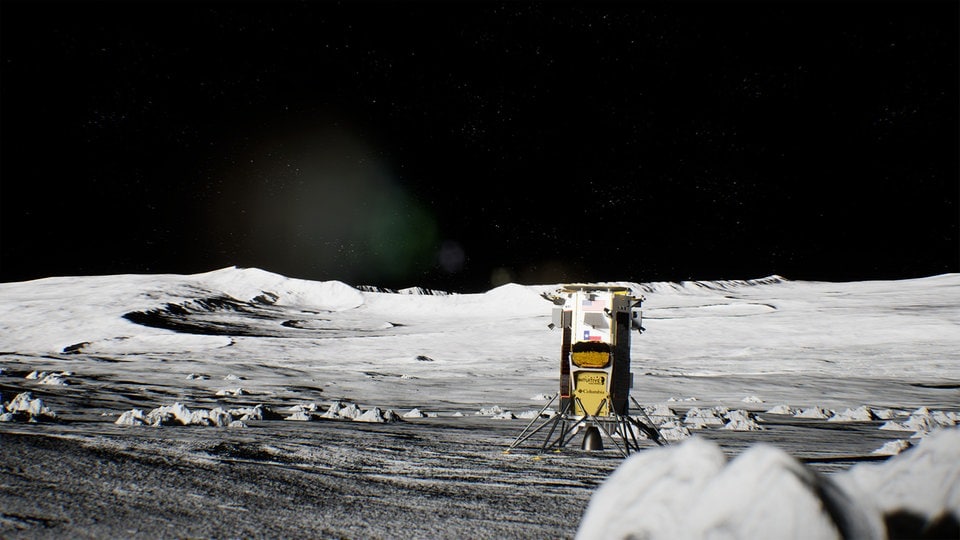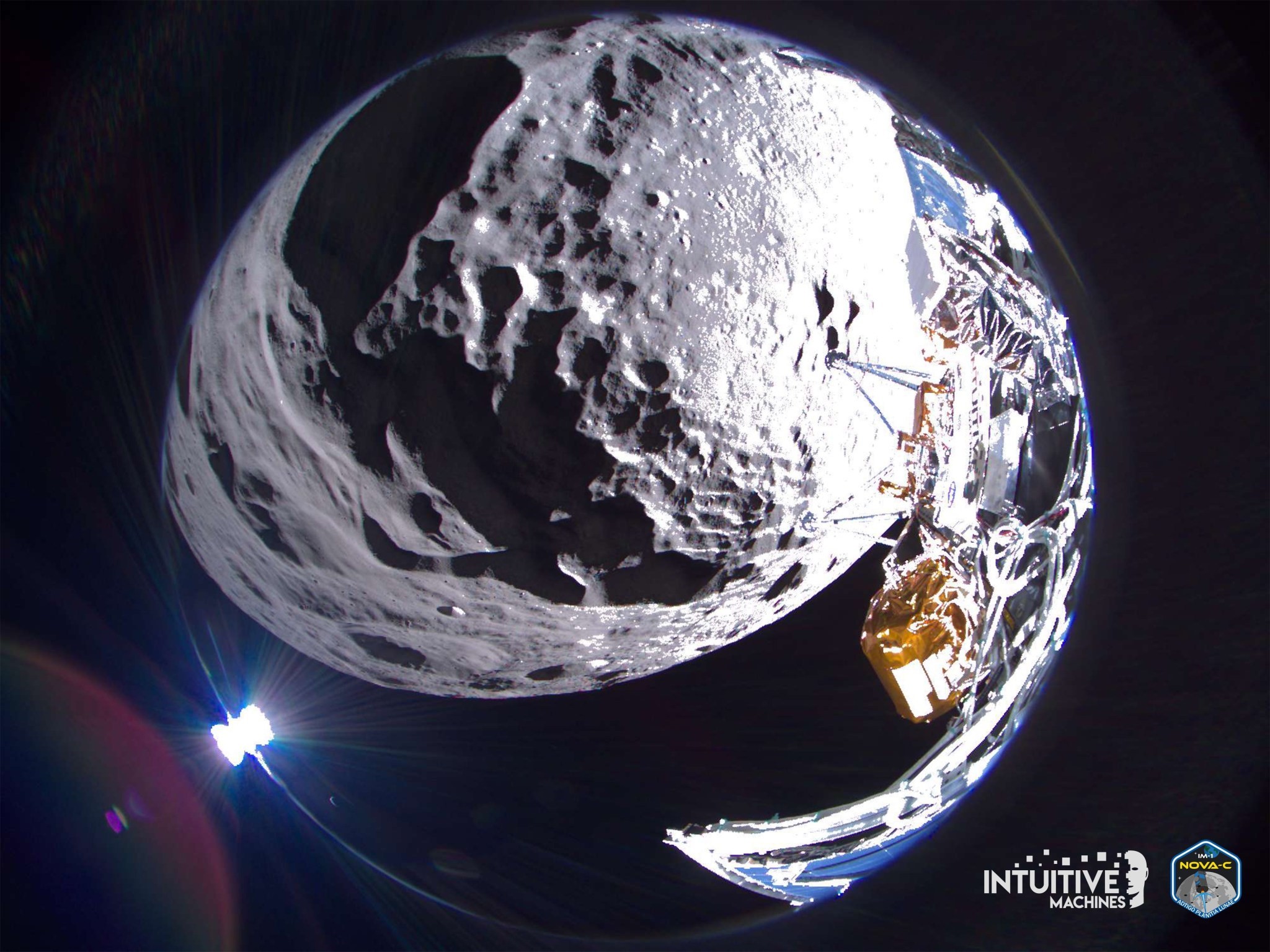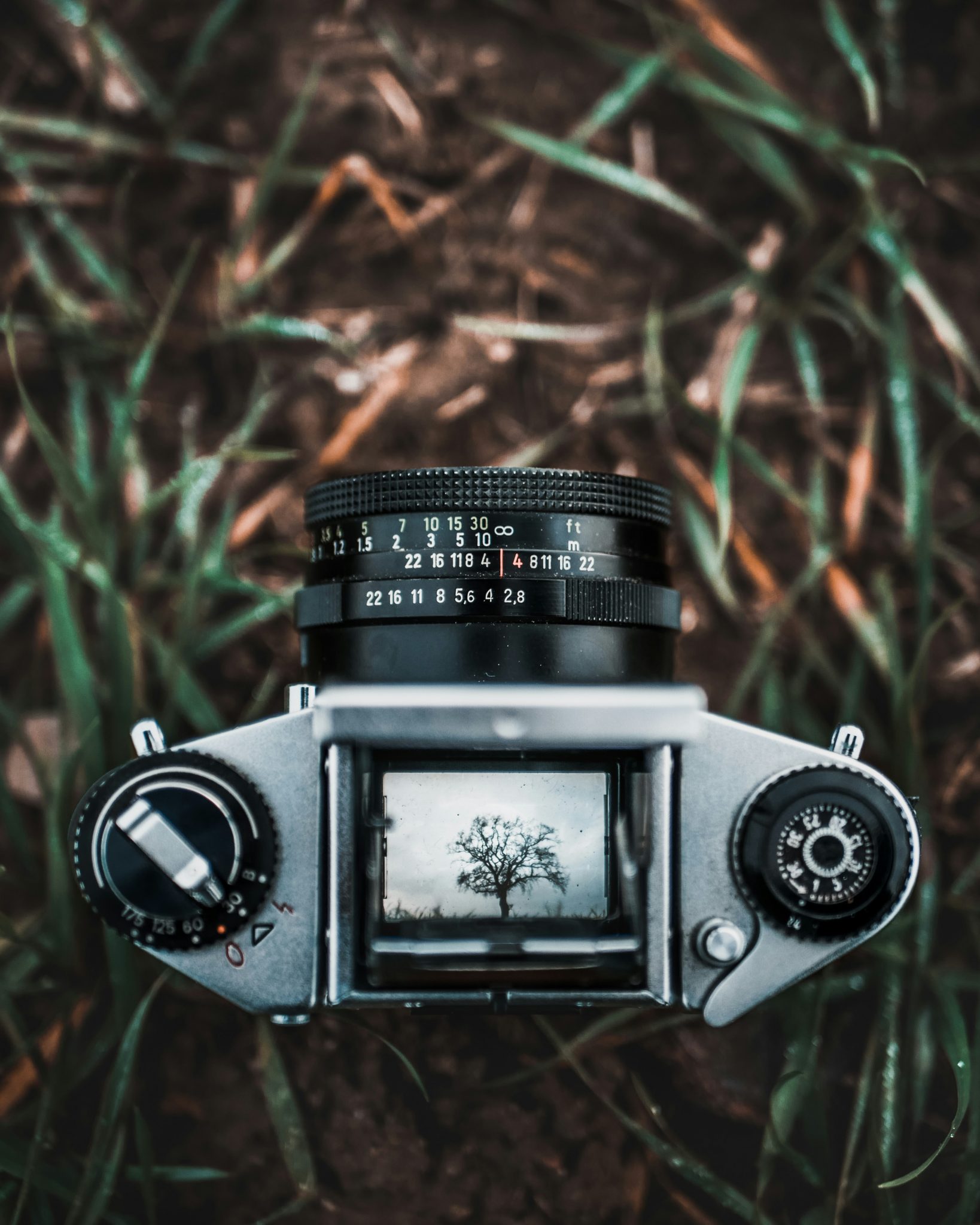When was the last time people looked up at the Moon? And what did they think? Does it really have a face, like the one we imagined as a child? Could one see the traces of Neil Armstrong & Co, the footprints of the first humans on the Moon, with a really good telescope? Whether it sometimes thinks of us? Of us humans. Of us on Earth. After all, it has been looking down on us for over 900 million years. Friendly. Somehow. Does it miss us? Twelve people were on it. Three pioneers and then another nine afterwards. Twelve people out of six billion. Certainly, not all of us will come. But maybe a few hundred thousand.
The Moon. It has been watching us for almost a billion years. Watching us.
Every day. And also last night. And it wonders. Especially four days ago. When “Odysseus” landed on it. The capable probe of NASA and various private companies. It tilted a bit to the side, the courageous $700 million probe with seemingly infinite functions. But in a way that everything remained intact and everything showed towards the sun and the world, so that “Odysseus” could do its main job: capture, store, photograph, and analyse everything, so that one essential answer can be given. Because “Odysseus” is a scout, like the scouts who rode ahead of the wagon trains during the settlement of the Wild West, scouting out arable prairies, he is also up here on a mission, with only one central task: finding water! The Moon is supposed to have water reserves that exceed our imagination and could save us for eternity. In its interior. Where we, the Earth, have lava and fire, the Moon has water. One is 99.9% sure. The brave “Odysseus” is supposed to clarify the last 0.1 percent. And on the side, a few more things. If it gives the thumbs up, signalling “Yes Water!”, in two years, in 2026, people will land on the Moon and drill for water.
And if they find some, that’s the first step towards life on the Moon. For all of us.
In the meantime, the Moon and “Odysseus” can become friends, and we down here can think about some things. About some important things.

The Moon doesn’t need us. But we need it. Very much indeed. © Credit: 2012 by Phillip Seeber is licensed under CC BY 4.0
But first, a little look downwards, at us, the Earth, at Houston. In 2017, the US government established a special department called “Space Policy Directive 1” and with it the intention to return NASA astronauts to the Moon. In the dry wording of the government and NASA, the world sensation looked like this: “We want to lead an innovative and sustainable exploration program with commercial and international partners to enable human expansion in the solar system and bring new knowledge and opportunities to Earth. Starting with missions beyond low-Earth orbit, the United States will lead the return of humans to the Moon for long-term exploration and utilization, followed by manned missions to Mars and other destinations.”

“Odysseus” in its garage in Houston, 2 days before launch. © Credit: Nick Rios
From the beginning, it was clear that NASA would involve private companies in the endeavour. In 2018, they requested proposals from nine companies. Among them were Intuitive Machines. For the NASA Artemis program to establish a permanent manned base on the Moon. Intuitive Machines was awarded the contract and in 2019 was tasked with delivering scientific payloads to the Moon. The contract for conducting Moon landings for NASA amounted to $118 million.
Intuitive Machines’ little wonder was called Nova-C, a class of lunar landers capable of delivering small payloads to the lunar surface.
The lunar lander “Odysseus” was launched on February 15, 2024 – equipped with a SpaceX Falcon 9 rocket – from Cape Canaveral into space. After an exemplary launch, “Odysseus” reached lunar orbit on February 21 and landed on the lunar surface on February 22. The first US moon landing since 1972!

Approaching the Moon: NASA hero “Odysseus” fulfills his mission. © Credit: AFP
Already on its way to the Moon, the phone booth-sized probe diligently began taking thousands of photos and collecting measurements and gases from the atmosphere. During landing on the Moon’s South Pole, “Odysseus” missed its target by a negligible 1.5 kilometres, but got tangled up with its landing feet in the lunar soil and tipped over. But even here, in this small mishap, it was evident again that NASA’s and Intuitive Machines’ Moon mission is under a lucky star: “Odysseus” tipped in a way that all solar cells pointed upwards. And also all measuring instruments and photo lenses!
The work could begin.
Since then, the small lunar visitor has been diligently delivering images and feeding NASA’s computers incessantly with new data. And we look up again from Houston and Texas, and think one thing. If “Odysseus” gives the green light for water search by humans up there, will companies like Intuitive Machines send us up there someday too? To the Moon? To hop around in weightlessness? Have a vacation from Earth?
Or live there? In a house on the Moon. In airspace. In a lunar city. With a new beginning. With a new start. Having learned from the mistakes on Earth. With our whole family. New tasks and new perspectives. The Moon in a new meaning.
The Moon as our new home. As another, complementary home.
Looking at it like that, despite the landing of space probes and the imminent drilling for water, it’s a sight as always. And the thoughts are the same too.
You think: Up there on the Moon, there’s none of the rubbish we have here on Earth. No traffic jams, no wars, no pollution, no stupidity. Also, no factory farming or overfishing, no slaughter of whales, and no domestic violence.
The Moon. The “vacation from our planet-planet.” That could be the headline for the space shuttle travel brochure. You briefly rub your neck and look down again, look around, and hear a nightingale sing in this clear night. And see a couple kissing next to each other. And both, the nightingale and the couple, make you think, as you stare at the Moon again.
Kissing under the starry sky wouldn’t work up there in the oxygenless lunar air with respirators on your head. And nightingales wouldn’t sing, either. Nor blackbirds. Nothing. No animal would be up there. No cute rabbits, not our beloved dogs and cats. Also, a day at the beach wouldn’t be possible or a walk through the forest. Coldplay concert in the open air with 80,000 other fans? Not happening. Driving a convertible? No chance. And sitting on the terrace with a few friends in the evening? Certainly not. And suddenly something shifts. And the Moon does that with you. Maybe it even wants that. Sends us its real message: I’d like to be down there with you. You have so many wonderful things down there. Your Earth is full of incredible wonders, it’s a masterpiece of the universe. A masterpiece from the Creator. I, the Moon, wouldn’t even know what to do first. Go boating on the Mediterranean, go to the movies with a beautiful girl, camp out on the beach, harvest grain, cook for friends, have children, further education at university, fall in love, be there for others. And, and, and.

Blue planet wonder Earth. The universe envies us! View of Earth rising over Moon’s horizon taken from Apollo 11 spacecraft. © credit: 2024 by NASA is licensed under CC BY 4.0
The planet of possibilities. And when you listen to what the Moon has to say, you suddenly nod. Slowly at first, then more vigorously. And you understand: Maybe one day it will bring us water, maybe “Odysseus” will find out even more wonders about it. But right now, at this moment, the Moon, like in all those millions of years and especially in the few thousand years of our existence, delivers its message: Be happy down there, make use of every single day. Make use of your possibilities. Take good care of yourselves. And draw from the great reservoir of Earth. From the great reservoir of humanity.
For the best in you.










